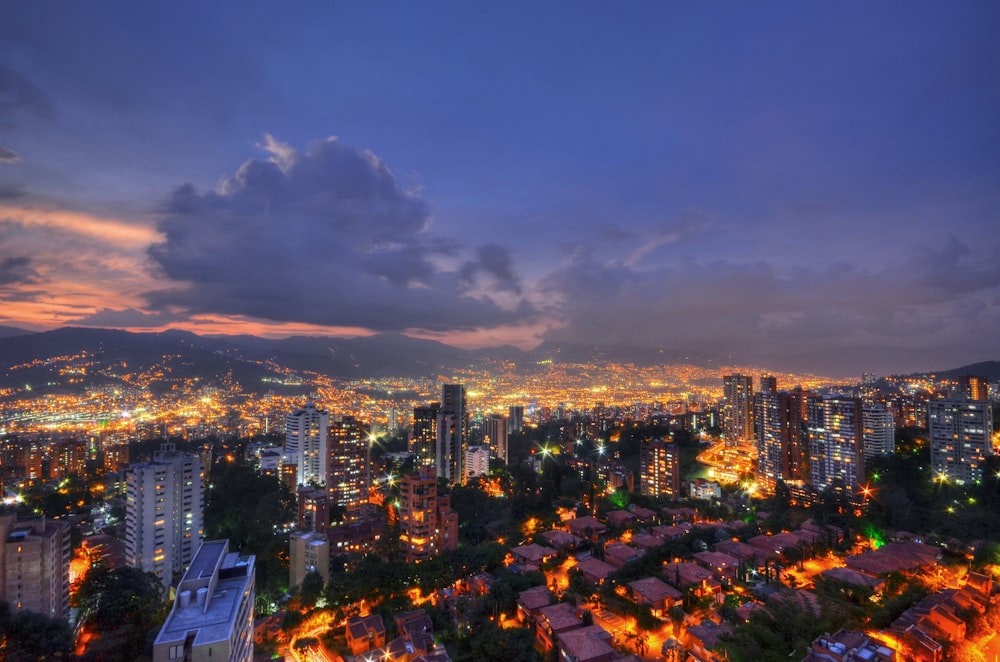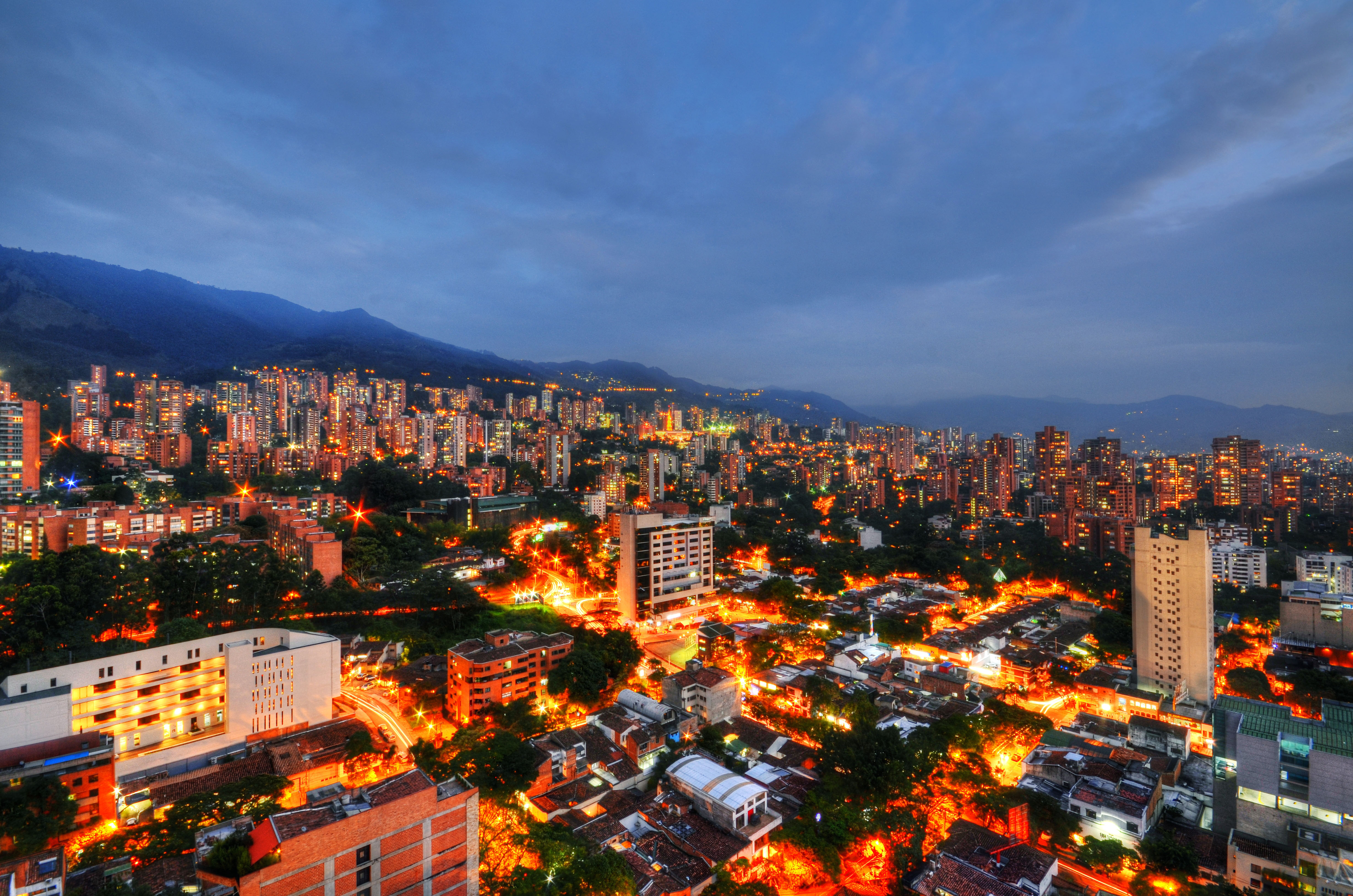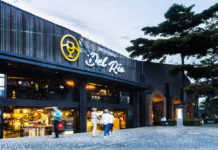December is arguably the best month on the calendar – it features both Christmas and New Year, meaning time off work, presents, seeing family, and a general joyful feeling. While North America and Europe tend to carry out celebrations for only the last two weeks of the month, Colombia extends the festivities across the whole of December. If you consider yourself a Christmas-connoisseur, prepare to be kept very busy with a whole host of activities come December in Medellín. Here’s how to celebrate the holidays like a Paisa:
Alborada
December 1st
The unofficial start to the festive season in Medellín is a divisive occasion. At midnight, at the turn of the month, fireworks are set off over the whole city, creating an intense glow in the sky. The origins of the Alborada go back to 2003 when the Cacique Nutibara paramilitary unit demobilized in 10 districts of Medellín. To celebrate their integration into civilian life, the group handed out huge amounts of gunpowder which were then made into fireworks. Supposedly, if you listen carefully on December 1st, the areas where the unit ruled most strongly have the loudest fireworks.
Objections to the Alborada not only stem from its dark past but also issues around safety. Fireworks for personal use are illegal in Colombia, and the majority of fireworks on December 1st are handmade and lit in residential areas, so accidents can easily happen. That said, some people actively choose to watch the fireworks up on the hillsides or from their balconies, ensuring the best view of the explosion of colors.

Día de las Velitas
December 7th
Colombia is a predominantly Catholic country, so many of the important dates in December have religious roots. Translating to ‘Day of Little Candles’ in English, Día de Velitas takes place every year on the evening before the Immaculate Conception and marks the start of the Christmas season in Colombia. Throughout the evening, people light candles and paper lanterns or put up light displays – with each flame representing a wish. The celebration varies throughout the country but in Medellín, the locals place their candles on the streets and normally make creative designs with the wax as it melts.
Although a simple tradition, Día de Velitas is particularly impressive when night falls and paths across the city are illuminated by the flickering lights.

Alumbrados Navideños
November 29th – January 6th
Medellín’s Christmas lights are world-famous and for good reason. What makes the city’s Christmas spectacle so impressive is the scale and detail of the structures. Ranging from plants, boats, rainbows, houses, and more, a team of dedicated artists and engineers work year-round to ensure the Alumbrados are nothing short of incredible.
Featuring more than 27 million LED lights, 2019 is the 52nd anniversary of the display and will take place primarily in Parque Norte and Parques del Río. There are also a number of other smaller locations where people can wander and admire the lights, as well as browse small Christmas markets. The event is free and runs for the full duration of December.

Novena de Aguinaldos
December 16th – December 24th
True to Paisa form, Christmas is a time to be sociable and be with family and friends. Novena de Aguinaldos (‘Advent Prayers’) are evenings where locals go to one another’s houses (this could be neighbors or relatives) and say a prayer telling the story of what happened through the nine-month pregnancy of the Virgin Mary and Joseph. Usually, a different person hosts each night, preparing hymns, carols, and lots of food.
While Novena de Aguinaldos dates back to the 1770s, these events are equally an opportunity for people to show off their Christmas decorations. Colombians typically have a Christmas tree, red and white candles on the windows or balconies, and a nativity scene (‘el peserbre’).

Navidad & Niño Jesús
December 24th
The most noticeable difference between Christmas in Colombia and places like the USA is that the main Christmas celebrations occur on December 24th. Similarly, rather than Santa Claus bringing presents, Niño Jesús (‘Baby Jesus’) delivers the gifts. Earlier in the month, children write their carta al Niño Jesús (‘letter to Baby Jesus’) and place it in the nativity scene, hoping they’ll be rewarded at midnight on the 24th. Visitors to Colombia may be confused to see images of Santa in shops and on television but this is more due to the influence of American culture rather than tradition.

December 24th is also when the big Christmas meal is eaten, normally with extended family members and during the evening before people go to Midnight Mass at church. The holidays see a whole range of Christmas-specific foods appear in Colombia, but some of the most popular treats include:
Lechona – pork stuffed with rice and peas
Ajiaco – a soup made of capers, corn-on-the-cob, avocado and a dash of sour cream
Buñuelos – deep-fried dough balls that can be savory or sweet
Hojuelas – fried pastries with sugar and jam
Natilla – set custard that can be vanilla, arequipe or plain-flavored
Galletas – biscuits (ideal for a Novena)
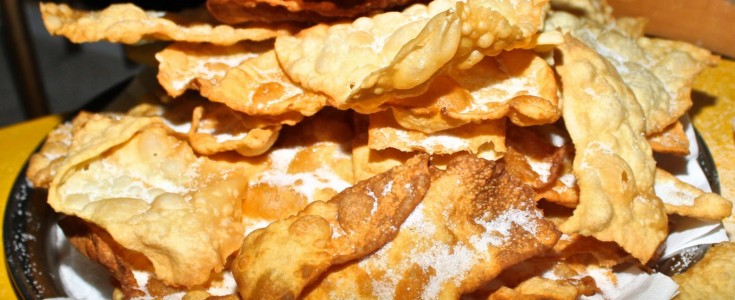
Día de los Santos Inocentes
December 28th
Rather than having to wait a full week until New Year and more fun, in Colombia, December 28th is the equivalent of April Fools’ Day. Meaning ‘Day of the Holy Innocents’, Día de Los Santos Inocentes is when Paisas enjoy telling jokes and playing pranks on each other. The day is very light-hearted but comes from a surprisingly dark religious custom. In the Catholic church, December 28th remembers the biblical story of how King Herod ordered the killing of male babies in Bethlehem after receiving news of Jesus’ birth.
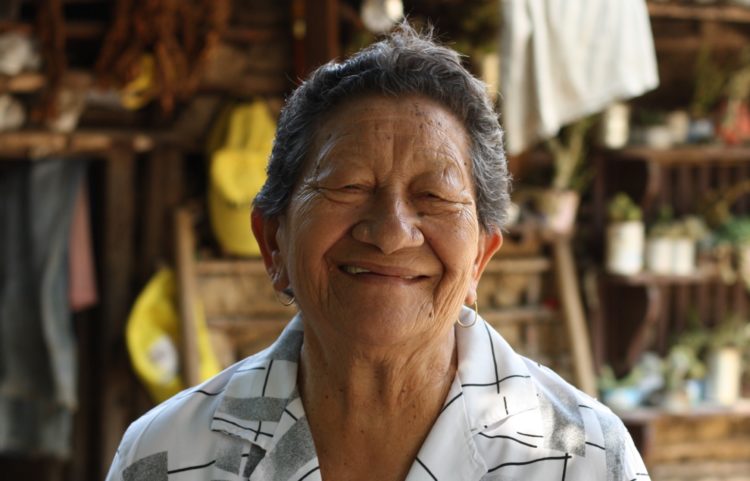
Año Nuevo
December 31st
Despite Paisas reputation for partying, New Year’s Eve in Medellín is not as wild as you may think. Traditionally in Colombia, December 31st is when families get together and share a meal with drinks. The majority of people don’t go to bars or clubs until after midnight, so the streets are eerily quiet in the build-up to the New Year countdown. Although younger crowds do head out drinking later, the likes of Parque Lleras and La 70 will be filled with more foreigners than Paisas.
